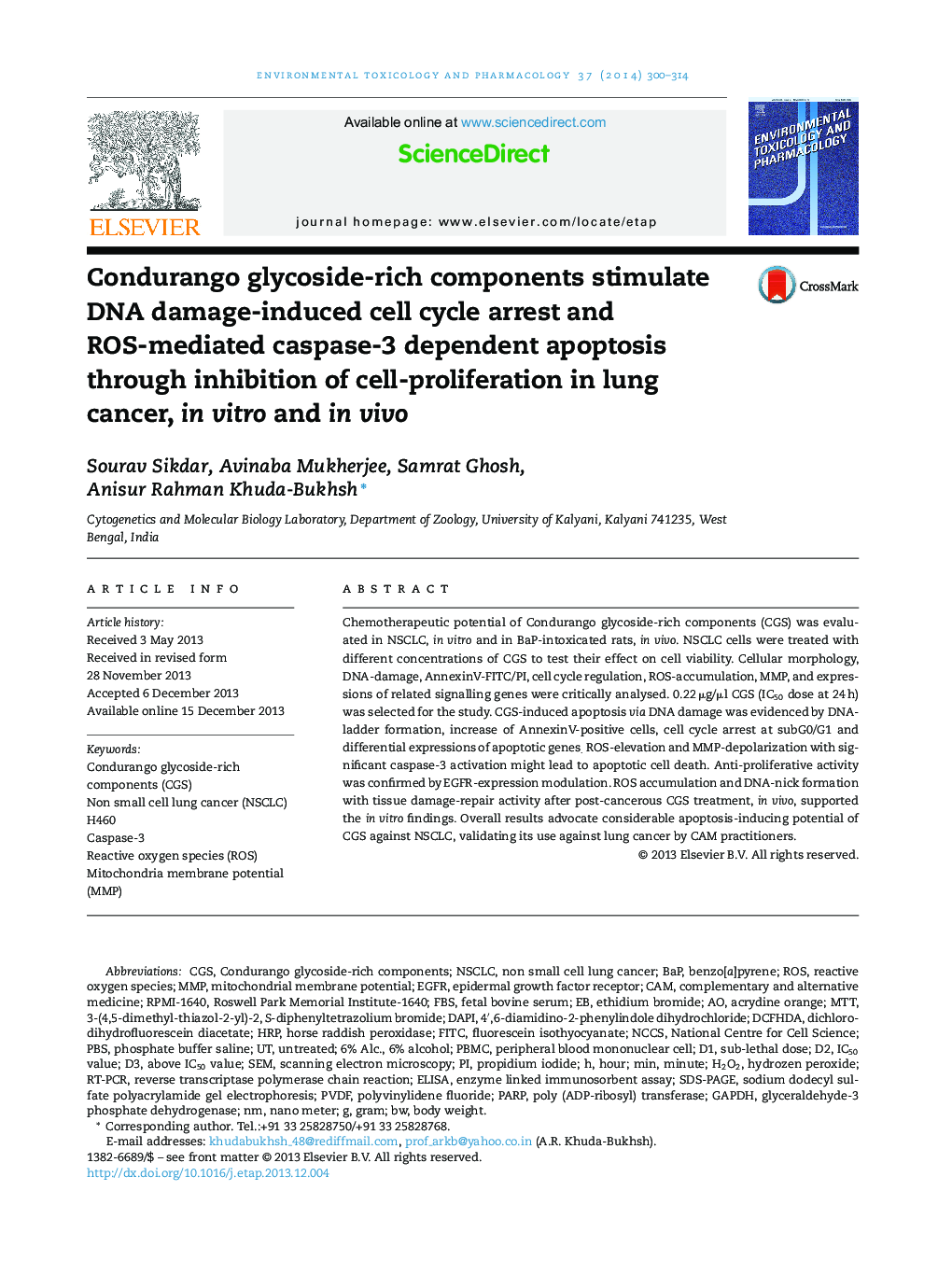| کد مقاله | کد نشریه | سال انتشار | مقاله انگلیسی | نسخه تمام متن |
|---|---|---|---|---|
| 2584002 | 1130710 | 2014 | 15 صفحه PDF | دانلود رایگان |

• This study examined the cytotoxic mechanisms of Condurango-glycoside rich components (CGS) against NSCLC-H460 cells.
• CGS induced cell death occurred mainly by apoptosis rather than necrosis.
• CGS caused ROS-dependent mitochondria-mediated caspase-3 activation and cell death.
• CGS led to the inhibition of cell proliferation by EGFR downregulation.
• CGS has the capacity to induce DNA damage via ROS accumulation in BaP-treated lung cancer of rat.
Chemotherapeutic potential of Condurango glycoside-rich components (CGS) was evaluated in NSCLC, in vitro and in BaP-intoxicated rats, in vivo. NSCLC cells were treated with different concentrations of CGS to test their effect on cell viability. Cellular morphology, DNA-damage, AnnexinV-FITC/PI, cell cycle regulation, ROS-accumulation, MMP, and expressions of related signalling genes were critically analysed. 0.22 μg/μl CGS (IC50 dose at 24 h) was selected for the study. CGS-induced apoptosis via DNA damage was evidenced by DNA-ladder formation, increase of AnnexinV-positive cells, cell cycle arrest at subG0/G1 and differential expressions of apoptotic genes. ROS-elevation and MMP-depolarization with significant caspase-3 activation might lead to apoptotic cell death. Anti-proliferative activity was confirmed by EGFR-expression modulation. ROS accumulation and DNA-nick formation with tissue damage-repair activity after post-cancerous CGS treatment, in vivo, supported the in vitro findings. Overall results advocate considerable apoptosis-inducing potential of CGS against NSCLC, validating its use against lung cancer by CAM practitioners.
Figure optionsDownload as PowerPoint slide
Journal: Environmental Toxicology and Pharmacology - Volume 37, Issue 1, January 2014, Pages 300–314